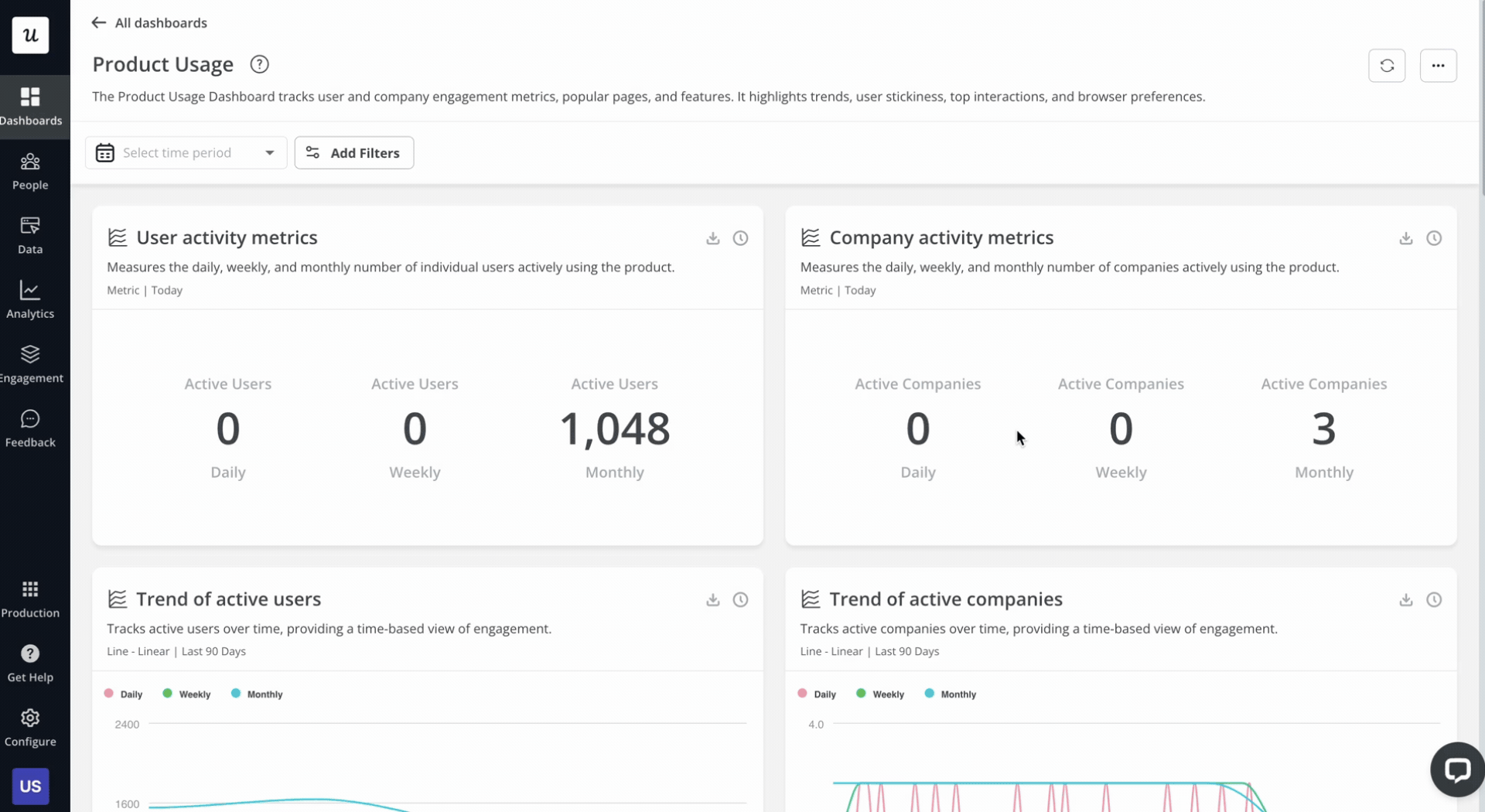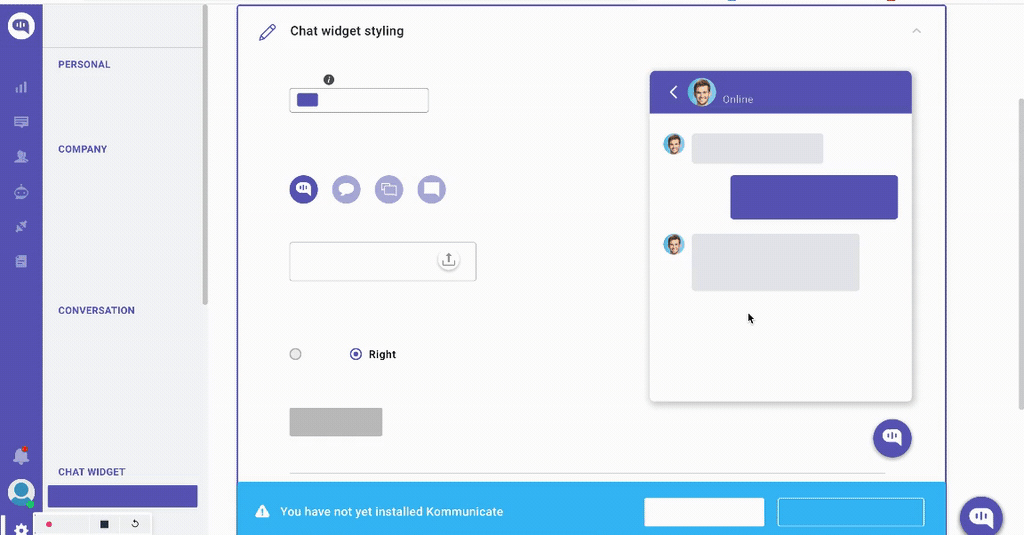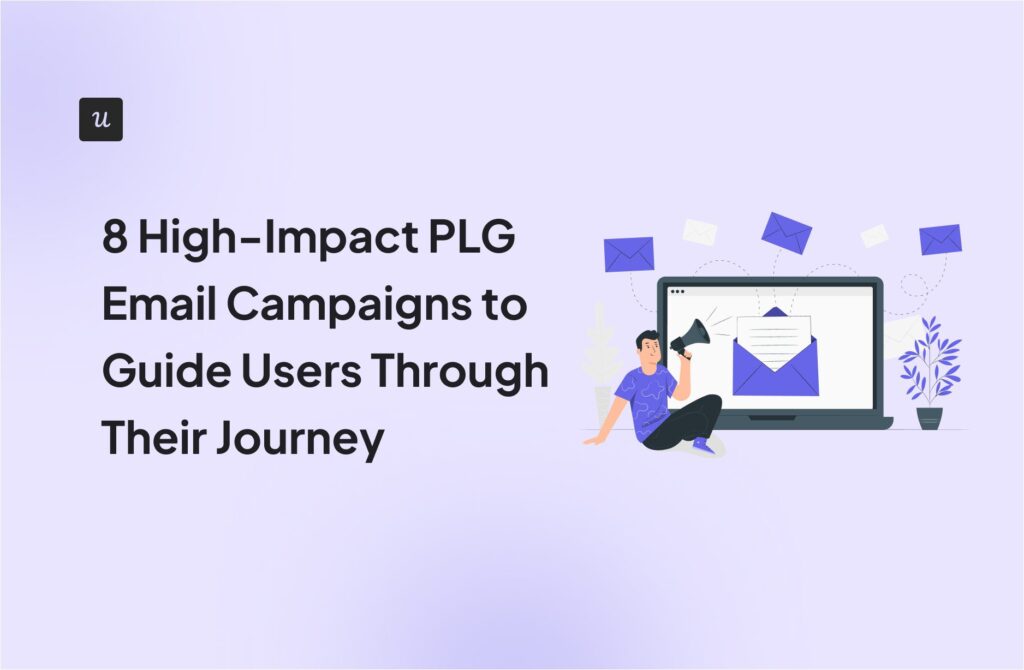![What is User Engagement? [+ 12 Strategies to Improve It] cover](https://userpilot.com/blog/wp-content/uploads/2023/06/what-is-user-engagement-12-strategies-to-improve-it_1179bc104b03d7a328ef41707c1c1436_2000.png)
What is User Engagement? Definition, Importance & Improvement Tips
Get The Insights!
The fastest way to learn about Product Growth, Management & Trends.
What is user engagement? Definition
User engagement is a metric that measures how much your users interact with a product, service, or content. It’s an indicator of the value users get from your product, customer loyalty, satisfaction and experience. User engagement rate can help inform product development and marketing strategies. But, user engagement is not a single metric or a one-size-fits-all concept. It can vary depending on the type, category, and purpose of your service, as well as the user’s goals, expectations, and preferences. Product and marketing teams, for instance, would have different ways to measure user engagement.
Why is user engagement important?
User engagement is a proxy to customer satisfaction and customer loyalty, and hence has a massive impact on user retention over time. This makes measuring user engagement extremely important for any SaaS company that wants to grow. User engagement is important for several reasons:
Improved customer retention
Retention is essential because acquiring new users can be significantly more expensive than retaining existing ones. High user engagement reflects that users are deriving value from the product, making them more likely to return, reducing churn rates.
Higher Conversion Rates
Engaged users are more likely to complete desired actions, such as making a purchase, subscribing to a newsletter, or filling out a form. When users feel connected to a product, they are not only more likely to convert but also to engage in repeat transactions, leading to an increase in customer lifetime value (CLV). Conversion rates often serve as a direct measure of how well user engagement strategies are working.
Improved Customer Satisfaction
By actively engaging with users through features like personalized content, quick customer support, and an intuitive user experience, businesses can significantly improve customer satisfaction. Users who feel that their needs are met are more likely to develop a positive relationship with the brand, resulting in stronger loyalty.
Higher Lifetime Value (LTV)
A user who is consistently engaged with a product or service tends to stay longer and use it more frequently, resulting in a higher lifetime value (LTV). Businesses can increase revenue per user by delivering continuous value that keeps them invested, whether through premium features, add-ons, or frequent product updates.
Stronger Brand Loyalty
High user engagement fosters a sense of community and connection to the brand. Engaged users are more likely to form emotional attachments to the product, which can translate into long-term brand loyalty. This deep connection can protect the brand from competitors, as loyal users are less likely to switch to another product.
More WOM (Word-of-Mouth) Referrals
Engaged users who have a positive experience are more likely to recommend your product to their friends, family, and colleagues. This type of organic word-of-mouth marketing is invaluable for attracting new users at minimal cost. A highly engaged user base can effectively become brand advocates.
More User Feedback and easier product improvement
Engaged users provide valuable feedback that can help businesses continuously improve their products or services. Through surveys, reviews, and in-app feedback tools, businesses can identify what users love about the product and what could be improved, allowing them to iterate and optimize more effectively.
Difference between user engagement and
customer engagement
Although user engagement and customer engagement sound similar, they mean different things. Oftent, the person using the app is not necessarily making the purchase decision. So in this instance, “user engagement” would refer to interactions between users (who may or may not be paying customers) and a product, such as a website, app, or software platform. Meanwhile, customer engagement focuses on interactions with paying customers, including those who have already purchased or subscribed to a product or service.
How to measure user engagement – metrics
How to improve user engagement?
Considering the importance of user engagement, it’s important to implement some strategies to improve it. Here are some quick user engagement improvement tips:
- Trigger a welcome survey to personalize the onboarding process and make the experience more engaging for users.
- Add interactive walkthroughs to ease the learning curve and help customers engage with your product quickly.
- Use onboarding tooltips contextually to handhold users as they explore your product and improve feature adoption.
- Implement an onboarding checklist to help users achieve the activation stage faster and keep them engaged.
- Adopt gamification to create a positive loop in the user that makes their path to success more enjoyable.
- Use AI to refine and optimize the microcopy for your tooltips, modals, and notifications to improve the customer experience.
- Publish new feature announcements to improve user engagement with new features.
- Create an in-app resource center where users can have instant access to continuous education in different content formats.
- Use funnel analysis tool to track in-app events that represent user engagement and optimize your funnel.
- Leverage session recordings to spot friction points and fix problems that could lead to more churn.
- A/B test different messages, formats, and designs to optimize user engagement.
- Segment your users to target in-app surveys, collect relevant data, and close the feedback loop.
Now let’s explore some user engagement best practices in more detail:
Strategies for Boosting User Engagement
Personalize customer experience from the start
When users get into a product for the first time, they are usually disoriented as they stare at an empty screen—and your user engagement will be compromised.
So if you trigger a welcome survey, you’ll be able to leave a positive first impression, collect essential data, and most importantly, personalize the onboarding process to make the experience more engaging for users.
With a customer success platform (like Userpilot), you can easily collect data through welcome surveys, and more:

Use interactive walkthroughs to drive actions
Unlike generic product tours, interactive walkthroughs elevate the onboarding experience (and in consequence, user engagement).
They introduce the product one feature at a time when the user takes initiative. It incentivizes the user to learn through an interactive experience. Plus, it’s designed to adapt to the user’s needs—just like in the example below.
So if you’re worried that your users need to understand your product better, try interactive walkthroughs to ease the learning curve and help customers engage with your product quickly.

Implement tooltips to prompt feature engagement
If you don’t show users the key features they need to enhance their productivity, they will never find them.
So, to improve feature adoption (and thus user engagement), trigger onboarding tooltips to handhold users as they explore your product.
The best way to use tooltips is within context. For instance, using them to introduce unused features, clarify the purpose of a specific button, or even tease premium features to push upsells (only when the user is at the limit of their current plan).

Drive activation for advanced or key features using checklists
During primary onboarding, engaging users with your product’s core features is critical to retain them (and avoid churn).
For this, you can add an onboarding checklist to help users achieve the activation stage faster and keep them engaged.
A great example is how this Userpilot onboarding checklist is short and actionable, plus it instantly introduces you to a critical feature (in-app flows) that users can quickly engage with.

Use gamification to drive high user engagement
With gamification, you can provide a more entertaining experience and create positive reinforcement to incentivize users to repeat a task (i.e. generate user engagement).
You can add elements such as badges, daily quests, progress bars, and levels for a more exciting product experience—creating a positive loop in the user that makes their path to success more enjoyable.
For example, Asana’s unicorn animation appears every time you complete a task, which encourages repeated engagement:

Refining in-app messages with AI to keep users engaged
Despite looking like a simple task, writing a microcopy that’s clear and actionable can turn difficult—especially if you rely on in-app messaging to engage users.
But with an integrated AI writer (like the one below), you can refine and optimize the copy for your tooltips, modals, and notifications to improve the customer experience and engage users.
Note: Although AI can be quite good at brainstorming and rewriting your copy, make sure to always review and heavily edit anything before making it live.

Introduce new features with banners
SaaS users are usually feature-blind. They’ll stick to the behavior patterns and workflows they’ve developed over time. Thus, they’ll easily miss out when new tools are live even if you put them in front of them.
One way to overcome this problem is by communicating with new feature announcements. You can use a subtle tooltip for minor changes or a pop-up banner when announcing bigger launches (like the screenshot below).
With hard-to-ignore announcements, you can get your user base’s attention, help them get started with new tools, and ultimately improve user engagement with new features.

Provide educational materials with in-app resource centers
User engagement requires as little friction as possible—thus you need to have answers ready for them when they get stuck.
And although you can’t be there for your users 24/7, you can implement self-service support. This way, customers can troubleshoot their issues quickly without leaving your app.
For this, it’s recommended to embed an in-app resource center where users can have instant access to continuous education in different content formats (such as articles, video guides, FAQs, and webinars).
The reason is simple: It helps users learn at a pace that suits their preferences and engage with your product in the process.

Identify and remove frictions using funnel analysis
In SaaS, the purpose of user engagement is to drive customers through the funnel more easily and effectively.
Simply put: If you don’t track and optimize your funnel, you can’t learn how to improve user engagement (and grow your business).
To track your funnel, Google Analytics can be used for free to check page-level activity (i.e. how users navigate your website). But it won’t suffice, as you’d need to use a funnel analysis tool to track in-app events that represent user engagement (such as downloads, chat engagements, purchases, feature activation, and more).
This way, you can have a clearer view of your funnel, identify points with the most friction/churn, and optimize user engagement—like on this Userpilot screenshot:

Use session recordings to understand user engagement
Another way to track user engagement is through session recordings.
Why? Session recordings allow you to vividly watch how your users navigate your app and see where they tend to get stuck.
With this tool, you can spot friction points and fix problems that could lead to more churn such as dead clicks, bugs, or web page freezing.
Improve user engagement with A/B testing
Different users react to different types of experiences—hence the importance of usability tests.
So, to optimize user engagement, start A/B testing different messages, formats, and even designs to see what gets better reactions—and keep iterating.
For this, set a single goal that represents user engagement. Is it to build the first email flow? To invite team members? To complete a set of tasks?
With a clear and trackable goal, you can—for example—show a checklist to 50% of a sample audience and see if it makes them complete their onboarding more often.
Collect feedback and act on it to enhance customer loyalty
The best way to improve user engagement is to ask your loyal customers directly. After all, they’re the ones who experience it.
Thankfully, you can segment your users and target in-app surveys such as CES (customer effort score), CSAT, and NPS surveys to understand their points of view. This way, you can collect feedback that’s relevant to their specific needs, improve their product experience, and close the feedback loop.
For example, if you were to ask users about what needs to be improved in your product, here’s the type of survey you’d need to create:

However, you wouldn’t ask this question to users who faced no problems at all. Thus, it’s more insightful if you target it to users who are disengaged (low NPS, dismissed guidance, low activity, etc):

With this survey, you’ll be able to understand what you need to work on and then communicate your improvements after implementing them.
As a result, you’ll inevitably increase user engagement and set the stage for building customer loyalty.
Conclusion
User engagement is not only about how often users use a product or service but also about how well they use it and how much they enjoy it.
With this guide, you can hopefully follow a user engagement strategy that works and makes your business grow.
So, instead of relying on the dev team to implement in-app experiences the way you want, why not try a Userpilot demo to see how you can optimize engagement?








